Table of Contents
Some of the most resilient businesses in India don’t sit in boardrooms or glass towers. You’ll find them tucked away in workshop lanes, inside wholesale godowns, behind kirana counters, or running quietly on second-hand machinery in rented sheds. These are the country’s micro, small, and medium enterprises (MSME)—businesses that don’t make the news, but without which the economy wouldn’t move.
Over the years, MSMEs have played a steady hand in job creation, manufacturing, and exports. They’ve kept local economies alive when larger players pulled out. They’ve trained workers, absorbed shocks, and built product lines from scratch. Today, they contribute nearly 30% to India’s GDP and provide livelihoods to over 11 crore people.
In February 2025, the government reworked the way these businesses are classified. The earlier benchmarks—based on investment and turnover—were too narrow for how many of these enterprises actually operate today. The updated definition expands those limits, bringing many fast-growing small firms into the MSME fold. This matters because MSME status comes with real advantages: easier credit, better access to public procurement, and more room to grow.
For any business owner wondering where they stand—or how to become eligible—this change is worth paying attention to.
How MSMEs Are Classified in 2025
The government updated the definition of MSMEs in February 2025. The rules now look at two numbers: how much you’ve invested in your business (equipment, machinery, tools), and how much you make in a year. You need to meet both limits to qualify.
Here’s the new breakdown:
| Type of Business | Investment (Max) | Annual Turnover (Max) |
| Micro | ₹2.5 crore | ₹10 crore |
| Small | ₹25 crore | ₹100 crore |
| Medium | ₹125 crore | ₹500 crore |
That’s it. No fancy formulas. Just a simple test of where you fall on both counts.
The older slabs hadn’t changed in years. But the cost of doing business has. Many firms that were technically “too big” for MSME benefits were still small by industry standards. This update corrects that. It brings growing businesses—especially in tech, logistics, and light manufacturing—back into the fold.
If you’re running a business and haven’t checked where you fall under the new limits, it’s probably time you did.
What Types of Businesses Fall Under MSMEs?
There’s no single master list from the government that names every eligible MSME business. Instead, the rules are simple: if your enterprise is legal, productive, and falls within the specified limits for investment and turnover, you qualify. That applies whether you’re stitching garments, fixing trucks, or running a cloud kitchen from a rented space.
That said, over the years, some industries have consistently made up the bulk of MSME registrations—while others are steadily growing into the fold. Here’s a closer look at the sectors that commonly fall under MSMEs in India today.
Manufacturing Enterprises
These are businesses that physically produce or process goods. Some run out of industrial sheds with older machinery. Others use more automated setups. Most serve a local or regional market, but some export too.
Common manufacturing MSMEs include:
- Textile units: garments, hosiery, woven cloth, home furnishings
- Rubber and plastic goods: moulded items, utility tools, packaging
- Metal fabrication: grills, gates, kitchen racks, almirahs, sheet metal parts
- Wooden products: furniture units, plywood goods, carpentry workshops
- Leather and imitation leather: belts, wallets, footwear, bags
- Chemicals and coatings: adhesives, paints, small-scale pharma units
- Food processing: spice grinding, flour mills, snacks, pickles
- Paper and stationery: notebooks, boxes, printed paper products
- Coir, khadi, and handicrafts: local handmade goods
- Ceramics and glass: tiles, crockery, sanitaryware
- Bicycle parts, fasteners, tools, small machinery components
- Micronutrients for agriculture, ayurvedic preparations
- Auto components: wiper blades, brake pads, electricals
Some of these businesses operate seasonally. Others run year-round. What matters is that they create tangible goods, stay within the financial limits, and are legally registered.
Service-based Enterprises
The service sector has seen a surge in MSME activity, especially since digital services and informal labor began moving into more formal setups. These businesses don’t make physical goods but provide repair, rental, support, or digital services.
Examples include:
- Auto repair workshops and diagnostic garages
- Laundry and dry-cleaning shops
- Beauty parlours, salons, grooming studios
- Training centres, coaching institutes, and upskilling hubs
- Testing labs, X-ray and diagnostic service providers
- Consultancy firms in HR, law, finance, or business setup
- Data processing and back-office support units
- Call centres, BPOs, and tele-support businesses
- Equipment leasing: pumps, generators, sound systems
- Software service providers, including local hosting firms
- Security and surveillance system installers
- Internet cafés, Xerox shops, lamination and printing services
- Agricultural service centres (tractor repair, pump servicing)
- App-based service firms with small teams (e.g., plumbing, AC repair)
These businesses may run out of commercial shops or even residential spaces, especially in smaller towns. What makes them eligible is not the setup—but their turnover and investment size.
Retail and Wholesale Businesses
If you’re in retail or wholesale trade, there was a time when you couldn’t register under MSME. That changed in 2021. The government issued a circular in July that year allowing traders to come under the MSME umbrella. That decision still stands.
So yes—retailers and wholesalers can apply, as long as they meet the updated limits for investment and turnover.
It doesn’t matter if you’re selling groceries, phone accessories, hardware, or school supplies. If your business is legal, registered, and fits the financial range, it qualifies.
Here are the types of shops and traders that fall under this:
- Small kirana stores
- Garment shops, footwear sellers
- Electrical and plumbing shops
- Cosmetics, toys, cutlery, home goods
- Mobile shops and repair counters
- FMCG distributors
- Hardware and cement stockists
- Stationery and bookshops
- B2B traders who supply to hotels, offices, or small factories
Even if you’re operating in a small town or running out of a rented counter, none of that matters. What matters is: you’re in trade, you’re making sales, and you stay within the limits. That’s enough.
One thing to keep in mind—some MSME schemes are meant only for manufacturers or service providers. So while traders can register and get the certificate, a few subsidies might not apply. But access to loans, credit protection, and delayed payment resolution? That’s on the table.
If you’re running a shop and you haven’t registered yet, it’s worth checking where you stand. You can do that directly on the Udyam portal.
Emerging and Overlooked MSMEs
Several newer or informal business types now fall under MSMEs, especially after the 2025 classification update widened the financial thresholds. These don’t always appear in older lists but are just as eligible.
Here are some you shouldn’t miss:
Events & Personal Services
- Wedding planners, decorators, tent and light contractors
- Makeup artists and bridal service providers
- Sound/light gear rental services for events
Food Businesses
- Home-based tiffin or snack units
- Cloud kitchens operating under FSSAI registration
- Mobile food vendors with carts or food trucks
- Small packaged food startups
Local Transport & Logistics
- Hyperlocal delivery firms with small fleets
- Mini courier agencies (1–5 vans or bikes)
- Packers and movers with basic warehouse support
- Intra-city freight operators
Renewable & Utility Services
- Solar panel installers for homes and small businesses
- Rainwater harvesting consultants
- UPS, battery, and inverter service firms
- EV charging point setup vendors
Digital & Smart Services
- Drone mapping or aerial survey firms
- 3D printing shops or prototype studios
- Freelance tech teams offering SaaS or PaaS
- Cybersecurity and audit consultants under LLPs
These are the kinds of businesses that may not have existed ten years ago—or weren’t on anyone’s MSME radar. But today, they’re among the fastest-growing, especially in Tier 2 and 3 towns. Many are run by first-generation founders, often working with lean teams and limited capital. If they meet the limits, they qualify.
Final Note
This list is as close to complete as it gets, based on government norms, public data, and real-world business activity. But MSME eligibility is ultimately determined by financial thresholds—not what line of work you’re in. If you’re running a legal enterprise that involves making, fixing, selling, or servicing something—and you’re under the cap—you likely qualify.
If you’re unsure, visit the Udyam Registration Portal and check your NIC code against your activity.
Who Doesn’t Qualify as an MSME
Most businesses that make or sell something, or offer a proper service, will fit under the MSME umbrella—as long as they stay within the investment and turnover limits. But not all activities count.
Some types of work, while legal, are left out by design. The government doesn’t want subsidies or credit lines going to non-commercial, informal, or non-productive setups. So, if you’re in one of the groups below, you’re not eligible for MSME registration.
Here’s where the line is drawn:
Excluded Activities
- Betting and gambling
Lottery shops, betting apps, casinos—anything involving chance and wagers. These are not treated as productive enterprises. - Forestry and logging
This includes firewood collection, felling of trees, and timber selling. Even if there’s income, it’s not considered eligible under MSME norms. - Fishing and aquaculture
Catching, breeding, or selling fish—unless it’s part of a registered processing unit—doesn’t qualify. Boats and tanks don’t count unless they’re part of a formal production setup. - Repair and trade of motorcycles
Specifically excluded. If your main business is fixing bikes or selling two-wheelers, it won’t pass the MSME filter—even with a shop and GST number. - Household hiring and staffing
Domestic help, cooks, drivers, nannies—even if managed by an agency—don’t fall under MSMEs. The model is service, but it’s personal, not commercial. - Homemade goods for personal use
Making pickles at home? Stitching clothes for family? Unless you’re selling it to customers, it won’t count. MSME status only applies when there’s a market-facing business. - Foreign organisations or embassies
International NGOs, consulates, UN branches—they may operate in India, but they aren’t Indian businesses. So, they’re not eligible.
Also not considered:
- Government departments or public offices
- Religious bodies or charitable trusts (unless they run a business arm)
- Social clubs, informal hobby groups, or resident welfare associations
- Personal blogs or YouTube channels without any commercial structure
Bottom line:
If there’s no customer, no product or service sold, and no real business setup—it’s not an MSME. When in doubt, search for your business activity on the Udyam Registration Portal. If your NIC code isn’t listed, it likely doesn’t qualify.
Conclusion
For all the noise around big industries and unicorn startups, it’s the smaller businesses that keep India running. The shop floor that doesn’t shut when power cuts hit. The vendor who delivers without being asked twice. The service provider who fixes problems faster than support tickets can be raised.
These are MSMEs. They don’t chase headlines. They build quietly, every day.
With the new classification norms in place, more businesses now fall under this umbrella. That’s not just a technical change—it’s a practical shift. It means access to easier loans, faster payments, fewer barriers when bidding for government work. It means recognition.
But none of that matters unless business owners know where they stand.
If you run a business—small, growing, even home-based—and you haven’t checked your eligibility, now’s the time. The Udyam portal doesn’t ask for much. A few numbers. Some details. Ten minutes of your time. What you get in return is clarity—and a way forward.
MSMEs don’t ask for favours. But when the system works in their favour, they move faster. That’s the idea behind all of this.
Disclaimer: The article is based on the research and available data on public domain and pls verify your research also before trusting any data from this article. Thanks to Anirban Sinha for updating the new classification on this page.
FAQs
Can I register for MSME without a GST number?
What documents do I need to register on the Udyam portal?
Is MSME registration mandatory to apply for a Mudra loan?
Can a business register under more than one NIC code?
Do partnerships and LLPs qualify as MSMEs?
Can I edit my MSME registration later if something changes?
What happens if I cross the turnover or investment limit later?
Do e-commerce sellers qualify as MSMEs?
Can I register multiple businesses under one Aadhaar?
Is MSME registration linked to income tax filings?
A product manager with a writer's heart, Anirban leverages his 6 years of experience to empower MSMEs in the business and technology sectors. His time at Tata nexarc honed his skills in crafting informative content tailored to MSME needs. Whether wielding words for business or developing innovative products for both Tata Nexarc and MSMEs, his passion for clear communication and a deep understanding of their challenges shine through.
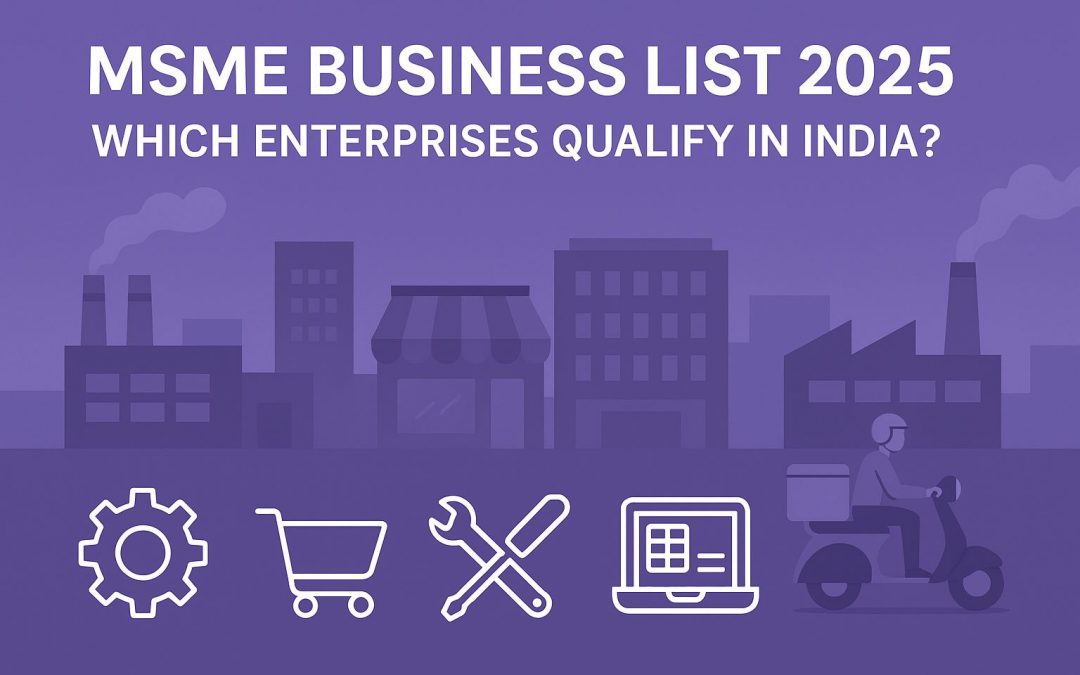


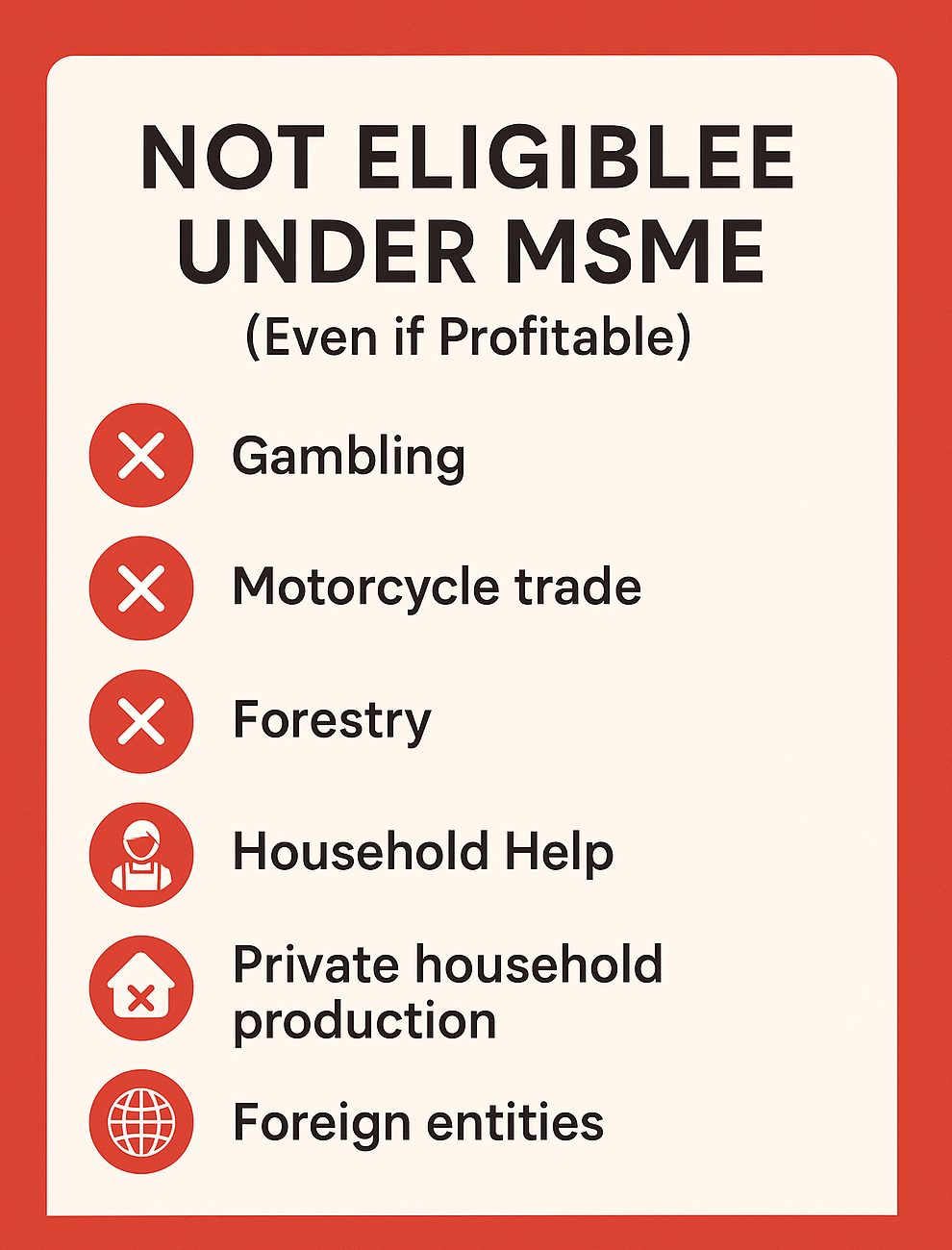
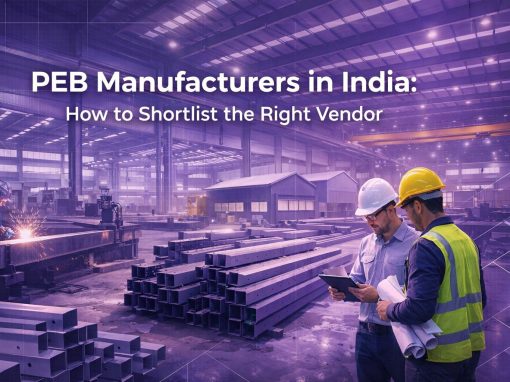
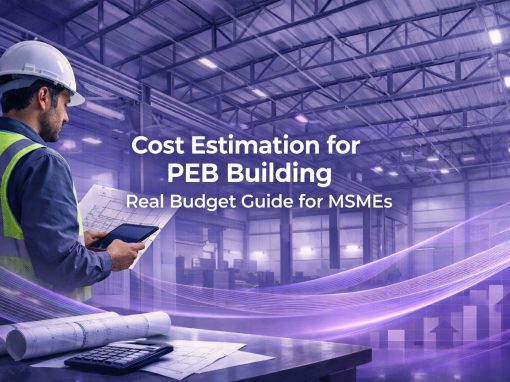

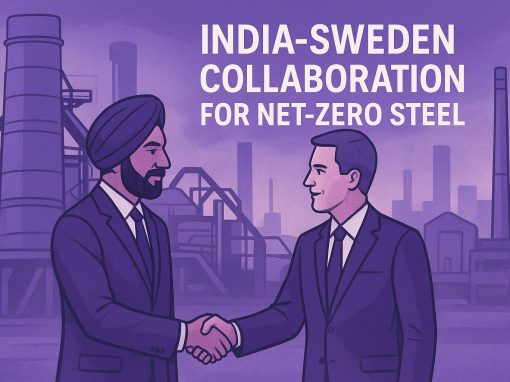
I have small catering business and operating locally with in 4-5 km max only. Should i registered myself as an individual? Currently it is not even registered firm.
Registering yourself and creating your portfolio can increase your chances to grow the business across cities. It also opens gate for GEM portal where such catering related tenders you can participate in.
Hi,Anirban
How’s you
I want to know about which I mentioned below.
I want to open a wedding guest house or do business by taking land on lease, home stay like zostel, home stay type of hotels or agro tourism type as well. So these businesses come under the hospitality line, can I get a loan from CGTMSE for this or any other loan pls suggest provide me proper guidence.
Rice factory agro based industry
Is covered in msme or not
Please respond
Marketing, sales & service categories may we add up the oil& gas sector business development serbices
I work as a freelance marketing consultant. but I don’t have a physical office or employees, am I still considered an MSME? And would I need to get a different type of registration?
kindly email : rohan.dibu@gmail.com
MSME compulsory for small businesses. Can, we sell online via MSME registration?
Due to nature of service given by a consultant, it falls under eligibility list, but other metrics like turnover and business registration is important. In current situation, You are not an MSME.
Noor E rickshaw company Baskhari Ambedkar Nagar Uttar Pradesh India pin code 224129
Trade/repair of motorcycles (wholesale and retail)
Retail trade except of vehicles and motorcycles
above two businesses that do not fall under the MSMEs?
some other site I read it fall under the MSMEs
please clearing my doubt.
Thank you
Noor E rickshaw company Baskhari Ambedkar Nagar
Please advise, how can we help you?
I am self employed , have been a financial advisor of Stock market, Mutual Funds n now starting Insurance. I don’t have a registered entity nor employees. I operate from home. How is my status categorised and am I eligible to apply for Udayam? If not pl advise best alternatives. Thank you
We are manufacturing patented medical disposable used in infection control, drug delivery optimisation and medical intervention in ventilated patients in the ICU. All products are invented in India with some initial exports.
These are all next generation medical devices .
Do we qualify as MSME ?
Yes, it does.
What about goats and cow sellings in market It’s not mentioned above any information about that.
It is part of agriculture and animal husbandry. It seems it falls under MSME. you need to elaborate the business model to know the right answer on it.
I plan to open a resort with an approx investment of Rs. 4 Cr in state of Uttarakhand. Does this activity qualify for a loan under CGTMSE scheme service sector industry ?
Hello, I have a music studio, where I produce & write songs & music, sale them and have a recording room as well and other musical equipment and set up in Bikaner, Rajasthan. Do I come under MSME? And what are the benefits of registering.
Hi Lavanya,
If your studio is accepting charges/fee or selling on registered business name and having a business account in bank, you should fall under MSME as per the Indian government’s MSME classification. This is because your studio involves the production, writing, and sale of music, which falls within the purview of manufacturing or services.
Every business which intent to generate profit by following any business practice come under this. You are selling songs as product.
A partnership firm for digital media services. Do we fall under MSME? and how to obtain that? Digital media services is not shown particularly in the portals. Which category will it come under?
Yes it falls under MSME category, you should register here – https://udyamregistration.gov.in/ It will be treated as service provider.
Hi
I work in real estate firm as a vastu consultant. Does my firm fall under MSME?
Yes it falls under services given by a company/firm which falls under MSME.
hello.iam kalyan ,currently iam building mvp saas website for medium enterprises.(smes),which is on demand manufacturing (design in cad to manufacturing) .Need help regarding whether on demand metal fabrication is possible in india and do we have that capable companies ?? if u have any data regarding companies ,we can discuss in my email.thank you
I am a virtual digital cryptocurrency trader with an annual turnover of approximately ₹3 crore. I would like to inquire whether I am eligible to register for Aadhaar Udyam under this business category.
I am having
1. Builders & developer FIRM
2. Industrial Consultancy FIRM
3. Kirana Store
4. REHAB CENTER
5. HOSPITAL
6. HOTEL
7. SCHOOL/ COLLEGE
8. YOGA / ZYM
9. RETAILER
10. MILK/PANEER SHOP
11. VEGETABLE SHOP
12. TAILORING SHOP
PLEASE CONFIRM,WHICH COMES IN MSME Category FOR AVAILING SUBSIDIES/ INCENTIVES FROM GOVERNMENT
hello sir i run a home appliance showroom can i get udhyam msme loan to develop my business
There are some guidelines for MSME loan under Govt Schemes. Kindly check this blog for details on banks and eligibility requirements etc…. https://blog.tatanexarc.com/msme/cgtmse-banks-list-collateral-free-loan/
My company is doing business of Digitising government records. Is it falls under MSME?
Your business give digital transformation services which fall under MSME as service provider.
i am a unemployed youth to start a new business under service sector / departmental store including sale of textile. whether it could get sanction under PMEGP loan
I am running a chemical supplying company. Buying and selling chemicals. Having godown also. Am I eligible for MSME loan?
We have a shop for retail of women clothing and a godown does it come under msme
If you bill customers on business name with GST charges which indicates that you represent a business and doing retail or wholesale business. This comes under MSME for sure!
From Permanent employment retired as a Railway Engg Expert, continued services as a Professional in Engineering works (Same work) under a Service PO. My salary CTC was converted to PO and paid Monthly under GST reimbusement. I register GST and remitting the GST paid and TDS 10% is deducted.
Does this service comes under SME/MSME?
I donot know, please advise
Planning to open a Coffee roastery or coffee house , Will it be comes under MSME . will i eligible for MSME Loan
Does Rationing shop fall under MSME
Please help with the circular pertaining to Foreclosure charges on MSMEs
Hi i am santosh dubey .i have small labour job buisness hand dyeing,washing on cloth and fabrics . Does it comes under Msmes.pls help me